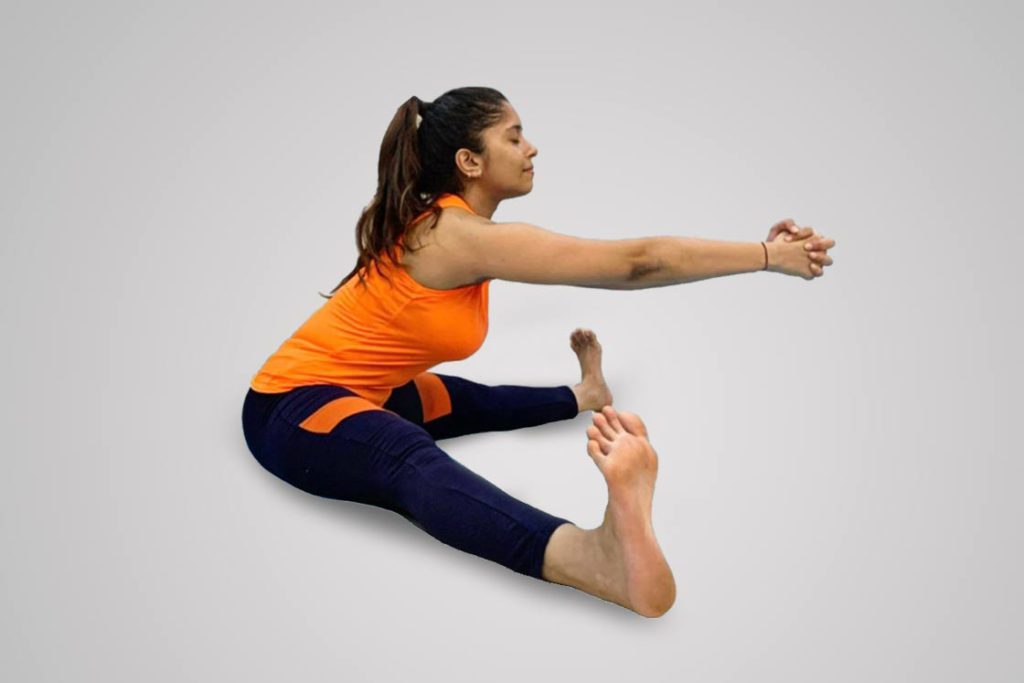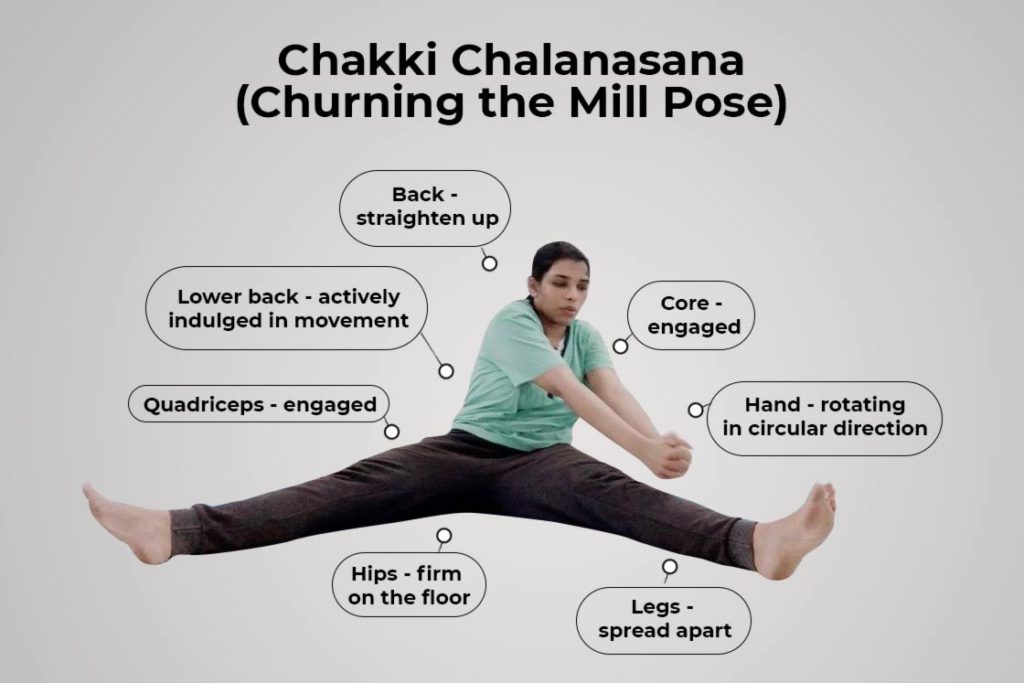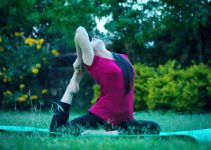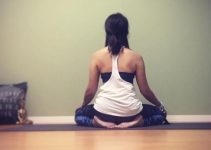
| Sanskrit Pronunciation | Chakki Chalanasana (Chuh-key-Chuh-LaaNA-AAHS-uh-NUH) |
| Meaning | chakki = side / chalan = to rotate / asana = pose |
| Pose Type | Standing and Stretching |
| Pose Level | Beginner |
| Anatomy | Core, Spine, hamstrings |
| Other Names | Chakki asana, Mill churning Pose, Twisting in sitting Posture |
Chakki chalanasana is a beginner-level sitting posture that requires the involvement of almost every part of the body to work in a synchronized manner. Being one of the rotational poses, it involves the periodic transition in the spine that makes it flexible. Moreover, it also stretches the entire back.
Apart from sculpturing the outer body, Chakki Chalanasana is an effective practice to improve the functioning of internal organs. To ensure equal benefits, the practice should be done in both directions equally to balance the subtle energy that participates silently in this asana practice. Hence, it also holds spiritual benefits.
Meaning
Chakki Chalanasana is the Sanskrit term, which on being translated, can be understood as ‘Chakki’ means ‘rotating wheel’, ‘Chalana’ means ‘to move’ and ‘Asana’ means ‘posture’. Therefore, Practicing this asana makes an individual mimic the person that actually rotates that wheel for a living.
Chakki or Mill is a device that had been mainly used to grind or crush food grain like wheat, rice, millet, corn, etc into powdered form in ancient India. A person pours a handful of food grain into a circular space along with the rotation of chakki or mill in a clockwise or anti-clockwise direction. It usually takes hours to obtain some good amount.
Chakki Chalanasana Practice Guide
Practitioner can go through the points give below to perform this asana for safe and imperative practice.
Contraindications
- Pregnant women should avoid practicing this Asana due to continuous change in shape and size of the Abdomen. This could be physically uncomfortable to the fetus and as well as to the mother.
- A patient who has undergone surgery on the stomach, waist, or any region, which gonna be affected while practice, should refrain oneself from doing Chakki Chalanasana.
- Practitioners with the condition of High blood pressure should avoid practicing this Asana for too long or should go mild. Practice needs to be stopped as one begins to feel uncomfortable physically.
- Individuals with the Injury in the neck, shoulder, knees, and back might worsen their present condition. One should wait till recovery or consult the doctor before enrolling self into this Asana practice.
Preparatory Pose
How To Do Chakki Chalanasana (Steps)

- Begin the practice by getting into the Dandasana. Your legs and back should be erect here.
- Now, slowly bring space between your legs as wide as possible and hands-on your waist or can be placed beside the hips to assist widening of the legs.
- After setting up of legs, raise your hands up to the sternum level. Clasp your hand into each other just as you are holding a stick in wheel.
- Now, inhale and engage your core, calves, thighs to move your upper body forward to the right side.
- This is the beginning point to form an imaginary circle. Now, exhale to come in a backward direction to the left side.
- Afterward, change the direction from clockwise to anti-clockwise and vice versa. Maintain here and keep making the circle for 10 to 15 minutes.
- As you finished the practice, bring your clasped hand in the center, and then, back to the previous position (beside the hips). Bring legs together by decreasing the space in between and finally into the Dandasana, then relax.
Follow Up Pose
- Bhujangasana (Cobra Pose)
- Vajrasana (Thunderbolt Pose)
- Shavasana (Corpse Pose)
Precautions
Practitioners should follow the points below to ensure the right and safe practice of Chakki Chalanasana.
- The space in between the legs should be equal in both directions. Less or more space to any of the side lays pressure on kidneys while changing the direction. Therefore, adjust your legs well before you begin to practice.
- While going in a forwarding direction prefer steady and slow diving to coordinate with breathing, which is one of the efficient aspects of Chakki Chalanasana. Any hurry while doing this could interrupt breathing that further affects the practice.
- It is to be advised that while coming backward always use your core and entire legs to stabilize the posture. However, this will also prevent you from falling backward.
Beginners Tips
- Beginners might be having difficulty spreading their legs wide enough in this Asana. So, one should not proceed beyond their limit as it could cause damage to the Hamstrings.
- The clasped hand should be straight and well gripped. So, they can able to perform well and round imaginary circle. Avoid losing your concentration here. Make yourself active to refine the posture.
- It is important to keep the spine erect throughout the Chakki Chalanasana practice because it will provide the necessary orientation that keeps your base well mounted on the floor.
Props and Modifications
- Practitioners having the fear of falling backward while coming back in this asana can put a chair or they can also practice it against the wall. However, going less deeper towards the backside could also be the remedy to the situation.
- In case of a hurting hip bone while performing the churning movement in Chakki Chalanasana one can place a soft blanket under their hips. It gives ease while in the pose.
Variations
By bringing some change in the basic posture individuals can practice the following asanas.
1. Seated Straddle Pose
In seated straddle pose, legs are farther in comparison to Chakki chakalasana, which lays more stress on the hamstrings. The hands go forward to touch the ground in the former pose, however, they perform churning movement in the latter giving a twist into the spine.
- Begin by coming into the Dandasana. Make sure your hand and feet should be straight.
- Now, gradually slide your legs apart as far as possible with the help of your hand. This will make you sit at the top of your hip bone.
- Then, inhale and raise your arms up. The hand should be straight facing forward and chest open. Engage your scapula to fully flex your back here.
- Now, exhale and bend forward. Try to touch the floor by erecting the spine. Beginners can bend their back to avoid stress over the spine.
- Afterward, inhale and slowly come back to the sitting position and reduce the gap between your legs to return to the Dandasana.
2. Parsva Upavisshta Konasana (Seated Side Side stretch)
The leg placement in Parsva Upavisshta Konasana exactly like the first variation. But the upper body and hands turn towards either of the sides to clasp the feet. Whereas, in Chakki Chalanasana the hands make an imaginary circle and the upper body twist around to support the hand movements.
- Begin by coming into the Dandasana. Keep your feet and spine straight while your hands on your thighs.
- Spread your leg apart as far as possible by placing the hand beside the hip to provide the necessary assistance in doing that.
- Now, breathe in and lengthen up your spine to turn right side. Try to hold the feet or grip the sole of the right foot.
- Slowly breathe and maintain here as per the limit while focusing on the right foot.
- Now, after returning to the middle turn towards the left side to hold the left foot or its sole. Hold here as well for some breath. Then come back to the middle position.
- From here, decrease the gap in between the leg by placing the hands beside the hip to finally in Dandasana.
Chakki Chalanasana Benefits
By practicing Chakki Chalanasana the practitioners can get the following health benefits.
1. Tone Up Upper Body
Chakki Chalanasana requires the active involvement of the upper body, which makes the muscles in this region experience a good workout. On regular practice, it leads to the toning up of the concerning muscles. However, it also improves flexibility in the long run.
2. Helps in PCOS Syndrome
PCOS is one of the most common problems among adolescent girls, which further results in Amenorrhea [efn_note] Amenorrhea https://www.mayoclinic.org/diseases-conditions/amenorrhea/symptoms-causes/syc-20369299 [/efn_note] obesity, and body hair with enlarged polycystic ovaries. However, Chakki Chalanasana executes pressure that regulates the blood circulation around the ovaries to fulfill the nutritional demand. Hence, helps in overcoming PCOS [efn_note] Impact of yoga and exercises on polycystic ovarian syndrome risk among adolescent schoolgirls in South India https://onlinelibrary.wiley.com/doi/full/10.1002/hsr2.212 [/efn_note]
3. Strengthens Abdominal Organs
The churning movement in this asana causes the abdomen to relax and contracts as a practitioner rotate circular. This provides a massaging effect over the internal organs like the stomach, kidneys, pancreas, liver, adrenal glands, intestines, gall bladder, etc. This improves their functioning and provides strength to the Abdominal organs [efn_note] Yoga in Pregnancy http://www.malayabiosciences.com/articles/2._Kannan_et_al_2015__MJB_2(2)_104-109.pdf [/efn_note] in the long run.
4. Stimulates Sacral Chakra
Regular practice of Chakki Chalanasana with the right breathing techniques under the skilled yoga teacher can result in the stimulation of the Sacral chakra residing on the sacrum. It transforms you into the energy source to creative activity, desire, relationships, movement, and pleasure.
5. Enhance Spinal Flexibility
Round and round motion increase the movements between the spinal columns attached to each other vertically. Such movements on being experienced by the spinal columns on a regular basis enhanced flexibility.
6. Makes Hamstrings strong and Flexible
Spreading of legs while performing Chakki chalanasana loosen up the muscle fibers attached in numbers to shape a muscle. These fibers become flexible and strong on stretching, which refines their basic structure.
Conclusion
Chakki Chalanasana is an effective yoga practice that makes one flexible and strong. However, it is also widely used to lessen various disorders of internal organs by regulating their functioning.
So, regular practice o this asana is advisable for the better health of an individual. One can practice this asana regularly to see the long term benefits.




